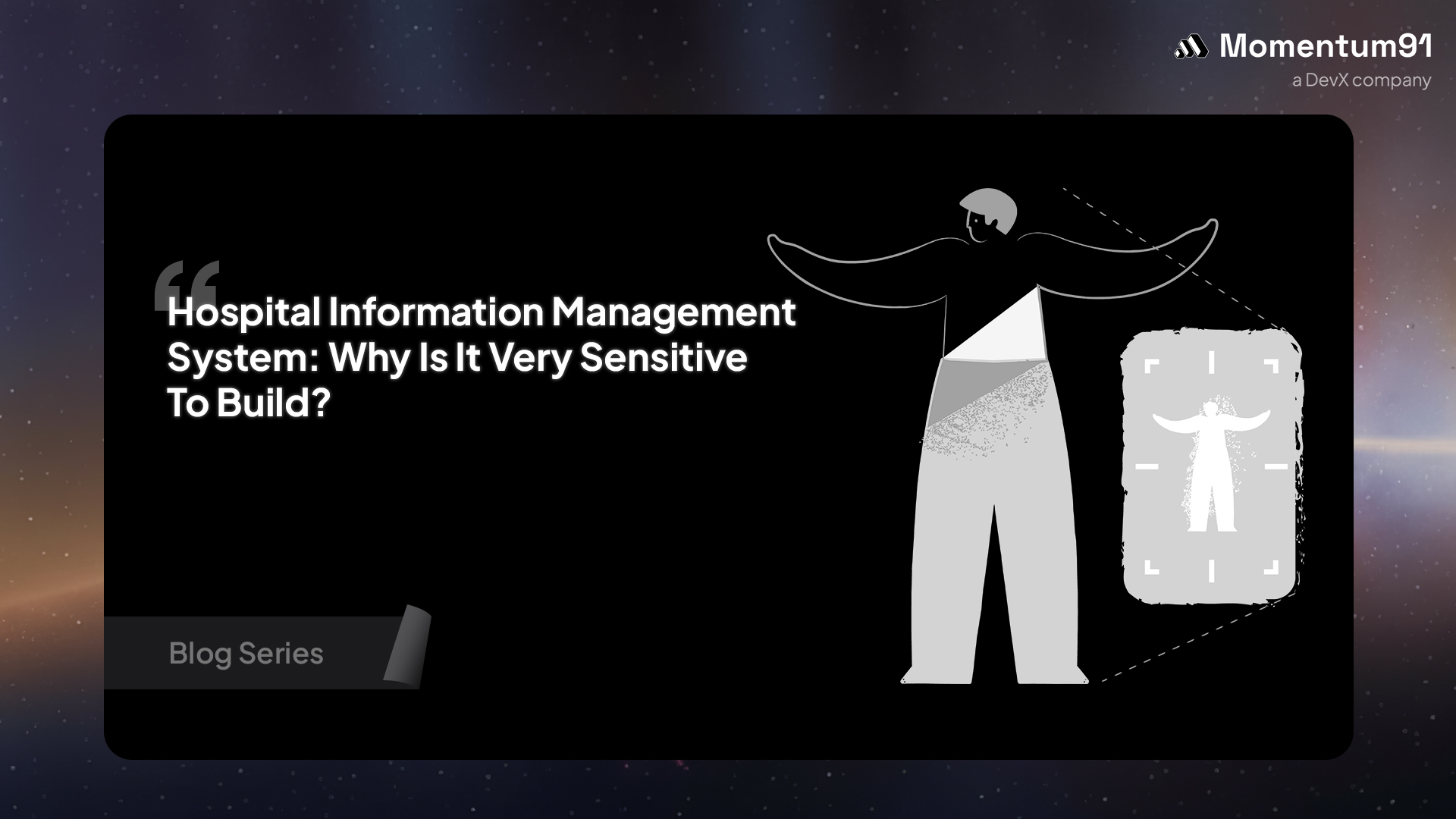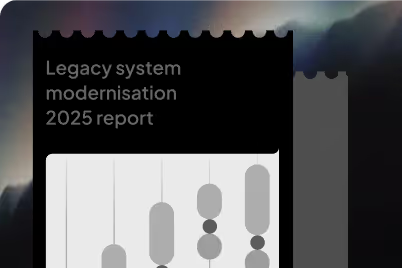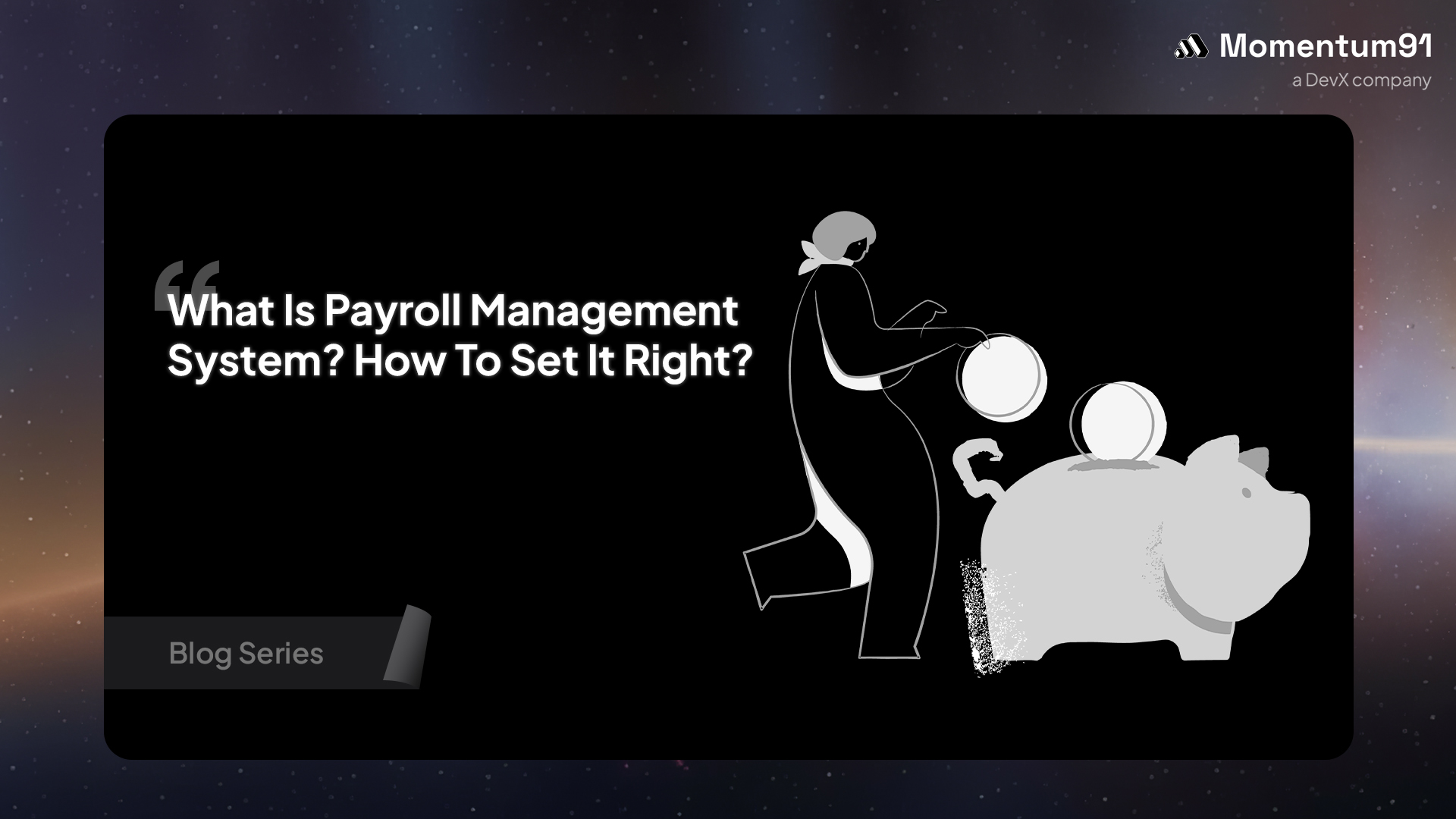Hospital Information Management System: Why Is It Very Sensitive To Build?

A doctor in the ER needs a patient’s allergy information right now. At the same moment, a hacker on another continent is trying to steal that same patient’s file to sell online.
That’s the daily paradox every hospital information management system faces. It must protect Protected Health Information (PHI) like a fortress yet keep it instantly available for doctors, labs, and billing teams. One mistake can delay a diagnosis or expose sensitive data.
When healthcare runs on real-time decisions, failure isn’t an option. Building a secure, compliant, and efficient system is not about adding more software. It is about creating trust between patients and hospitals, where privacy, speed, and access stay in balance.
Why Patient Data Privacy Is a Core Hospital Information System Challenge
Protecting patient data is one of the hardest parts of running a hospital information management system. Every medical record, lab result, and diagnosis must stay private yet instantly available for treatment.
Breaches in healthcare data security can expose personal details, violate HIPAA compliance, and damage a hospital’s reputation beyond repair.
1. Why Is Patient Data Privacy a Life-or-Death Issue?
Every entry in a hospital information management system represents a human life. A leaked Electronic Health Record (EHR) can reveal private conditions, test results, or mental health data. Cyberattacks on hospitals have increased by over 60% since 2023, often locking doctors out of systems and delaying care.
Here are a few real cases to consider:
- Ransomware attacks that block doctors from accessing patient files.
- Insider misuse of Protected Health Information (PHI) for personal gain.
- Weak passwords or unpatched systems causing unauthorized access.
When patient data privacy fails, treatment stops, trust breaks, and patients pay the price.
2. The HIPAA Labyrinth: Where Compliance Never Ends
HIPAA compliance is not a checklist; it is a daily process of protection. Hospitals must log every access, encrypt all records, and keep detailed audit trails. The HITECH Act extends these requirements by demanding quick breach reporting and proof of preventive action.
Ongoing compliance needs:
- Role-based access for staff.
- 24/7 system audits for healthcare cybersecurity.
- Training programs that prevent internal data misuse.
Even a minor lapse in compliance can cost millions and shut down operations. Compliance in a hospital information system is an active practice, not a policy statement.
3. The Zero Downtime Rule
A hospital cannot afford downtime. When a hospital information system fails, surgeries pause, lab results vanish, and care quality drops. To prevent this, hospitals use redundant data servers, backup networks, and real-time monitoring tools. Modern systems combine cybersecurity in healthcare with uninterrupted uptime, ensuring care continues safely.
A strong hospital information management system protects patient data and supports nonstop service. The next challenge is integration. Every department, lab, and billing platform must communicate within a hospital information management system without adding new risks.
Interoperability and the Clinical Advantages of a Hospital Information System
Once a hospital information management system secures data, the next task is making that data work together. Hospitals use dozens of tools for labs, billing, imaging, and pharmacy.
Without interoperability, these systems act like islands, each holding valuable information but unable to share it. When data stays trapped, doctors make decisions with only half the picture.
The Interoperability Nightmare: Can You Fax That Over?
Many hospitals still rely on outdated systems that can’t talk to each other. One may use a platform from 2005, another from 2015, and a third still runs manual backups. This leads to endless duplication and delays in patient care. A doctor requesting test results might hear, “Can you fax that over?” instead of receiving them instantly.
To solve this, standards like HL7 FHIR act as a universal translator for healthcare system integration. When applied correctly, these frameworks allow all departments to share Electronic Health Records (EHR) seamlessly, reducing data silos and speeding up treatment.
Clinical Decision Support: The System Must Be a Co-Pilot
An advanced hospital information system is more than a data vault; it helps clinicians make faster, safer decisions. Through clinical decision support, the system flags allergies, drug interactions, or missing reports before mistakes happen.
For instance:
- It can alert a doctor if a prescribed medicine conflicts with the patient’s allergies.
- It can highlight abnormal lab results for immediate review.
- It can recommend follow-up actions based on treatment history.
This kind of intelligent support not only improves outcomes but also reduces human error across departments.
The Patient Portal: Are You Part of Your Own Care Team?
Modern healthcare gives patients a role in managing their data. A secure patient portal within the hospital information management system lets individuals view their test results, treatment plans, and upcoming appointments. It strengthens transparency and improves engagement, but it also introduces new layers of healthcare data security.
The system must verify identity, encrypt connections, and track all access to maintain HIPAA compliance while keeping the experience simple.
When hospitals achieve interoperability, data flows like a single heartbeat across departments. The next challenge is balance. Building a hospital information system that stays secure without making access harder for the people who depend on it most.
The Central Hospital Information System Challenge of Security vs. Usability
Building a hospital information management system is like walking a tightrope. Hospitals need airtight healthcare data security yet can’t afford to slow down doctors, nurses, or billing staff who depend on fast access.
A single extra login step can feel like a roadblock in an emergency. On the other hand, one weak access control can expose Protected Health Information (PHI). This constant tension defines modern hospital information system challenges.
1. The Vendor Management Blame Game
Hospitals rely on multiple vendors, including billing providers, lab interfaces, imaging tools, and pharmacy systems. Each one connects directly to patient databases. When one link breaks, the entire network becomes vulnerable. In 2024, a billing software provider breach exposed more than 100 million patient records across U.S. hospitals. That incident proved how fragile shared ecosystems can be.
To stay compliant with HIPAA, hospitals now:
- Vet vendors through detailed security assessments.
- Limit external access to only necessary modules.
- Require contractual guarantees for cybersecurity in healthcare.
Vendor management is not a procurement task anymore; it is a frontline defense.
2. The Human Firewall: When People Become the Weak Link
The biggest threat to a hospital information system often is not a hacker; it is human error. A nurse under pressure might reuse passwords or leave a session open on a workstation.
A 2025 IBM Security report found that 23% of healthcare breaches start from insider mistakes. Hospitals are solving this by introducing practical, user-first safeguards:
- Single sign-on (SSO) for faster, safer logins.
- Automated screen locks after inactivity.
- Adaptive authentication based on user role and device.
When security blends naturally with workflow, staff follow it willingly.
3. The Digital Ghosts Problem
Every hospital carries decades of digital baggage. Legacy databases hold old Electronic Health Records (EHR) that still contain active patient information. During data migration, these outdated systems become weak points. Corrupted or incomplete transfers can erase a patient’s treatment history or break continuity of care.
The best hospital information management systems now use encrypted pipelines, real-time validation, and mirrored backups to keep legacy data intact while moving forward safely.
Security and usability are not rivals; they are partners in design. The next step is rethinking how these systems are built from the ground up, where protection, access, and workflow all share equal priority.
Solving the HIMS Paradox: A New Approach to Your Hospital Information Management System
The ongoing struggle between security and usability in a hospital information management system cannot be fixed with patches or plugins. Hospitals need a design philosophy that blends protection, compliance, and usability.
The best systems go beyond features and focus on how people actually work. To gain the full advantages of hospital information system adoption, teams must build for speed, trust, and accuracy without ignoring safety.
1. Security by Design, Not by Addition
Too many hospitals still add healthcare data security at the end of development. That outdated approach leaves room for breaches and hospital information system challenges later. Building with HIPAA compliance and Zero Trust from day one changes the game.
Encryption, audit logs, and identity verification become part of the architecture, not optional tools. This approach eliminates weak points before they surface and keeps Protected Health Information (PHI) safe across every access level.
2. Clinical Workflow First, Technology Second
A successful hospital information management system is built around real clinical routines. When developers understand how nurses, lab technicians, and doctors use data, they design software that fits naturally into care delivery. The result is faster adoption, fewer errors, and smoother coordination.
Security works best when it supports people instead of blocking them. Momentum91’s healthcare teams start by mapping workflows, not menus, to make safety and performance coexist.
3. Open Standards Prevent Closed Systems
True interoperability depends on open connections. Protocols like HL7 FHIR and healthcare system integration frameworks make data sharing consistent across departments. When systems communicate clearly, hospitals avoid data silos, duplicate entries, and missing records.
Open standards also allow integration with pharmacies, billing systems, and labs while maintaining cybersecurity in healthcare. This flexibility prepares hospitals for future innovations such as clinical decision support and AI-based automation without risking compliance.
4. Data Governance as a Daily Habit
Data governance is the foundation of reliability. Every hospital information system should include structured audits, access reviews, and vendor checks. Policies must define who owns data, who can view it, and how long it is retained. Regular internal monitoring helps identify weak links early, protecting both compliance and continuity of care.
A modern hospital information management system does not choose between privacy and performance. The smartest approach combines them through design, giving hospitals a secure, efficient, and trusted system that grows with their needs.
How Momentum91 Builds a Hospital Information Management System?
Momentum91 brings together deep healthcare technology expertise with real clinical workflow insight to build secure, scalable, and compliant hospital information management systems.
With eight years of experience, operations across 25 centers in 11 cities, and a network of 13,000+ professionals, Momentum91 delivers embedded, full-stack teams that integrate seamlessly with hospital IT and medical staff.
We move fast, with 95% of hospital information management system projects going live in under a few weeks. Our teams manage everything from PoC development and clinical workflow mapping to deployment, UI/UX optimization, and compliance validation.
Key Strengths:
- AI-Driven Development: Each hospital information system integrates predictive intelligence for faster decisions and improved clinical decision support.
- End-to-End Delivery: From concept to rollout, Momentum91 handles all phases of secure system development, including HIPAA compliance and healthcare data security.
- Integrated Product Teams: Engineers, designers, and compliance experts collaborate directly with healthcare providers for smooth implementation.
- Workflow-Aligned Design: Built to match real hospital operations, ensuring usability without compromising protection.
- Scalable Implementation: Rapid expansion across facilities powered by a global delivery infrastructure.
Momentum91 builds platforms that protect patient data, maintain regulatory compliance, and connect every department through unified healthcare system integration.
Conclusion
A hospital information management system is one of the most sensitive technologies in healthcare. It stores medical histories, billing details, and confidential Protected Health Information (PHI) that must stay private yet accessible every second. The pain lies in balancing speed with safety. Hospitals often face breaches, long downtimes, and frustrated staff using complex systems that slow emergency care.
Choosing the wrong hospital information management system can bring chaos. Data leaks trigger HIPAA penalties, system crashes halt surgeries, and fragmented Electronic Health Records (EHR) leave doctors blind in critical moments. A single failure can cost millions and permanently damage public trust.
Momentum91 solves this by combining deep healthcare tech expertise with real clinical insight. Connect with Momentum91 today to build a smarter, safer, and fully compliant hospital information management system that works seamlessly for your entire care network.
FAQs
1. What’s the difference between an HIMS, EHR, and EMR?
A hospital information management system oversees the entire hospital, including billing, labs, and scheduling. An Electronic Health Record (EHR) connects patient data across different providers, while an Electronic Medical Record (EMR) focuses on one clinic. Together, they strengthen healthcare data security and improve decision-making accuracy.
2. What is interoperability and why does it matter so much?
Interoperability ensures all departments within a hospital information system communicate without barriers. It removes data silos by linking pharmacy, labs, and administration through standards like HL7 FHIR. This improves coordination, reduces duplication, and accelerates treatment delivery across the care network.
3. What is the single biggest security risk for a hospital?
The largest threat to a hospital information management system is internal error or vendor negligence, not hackers. Weak passwords, poor vendor management, and outdated systems cause most breaches. Adopting HIPAA compliance and active monitoring keeps Protected Health Information (PHI) safe.
4. Why not just use a standard business software for hospitals?
Generic business tools cannot manage hospital information system challenges such as clinical decision support, patient tracking, and healthcare system integration. They lack medical-grade security and HIPAA compliance. A purpose-built hospital information management system supports both security and efficiency for modern healthcare operations.
The inbox update you’ll never want to skip
A quick catch-up with ideas, wins, and tips worth stealing, straight to your inbox every week.
The easiest way to reach us.
Share your details and we’ll get back within 24 hours.
Blogs
A plethora of insights,all in one place
From strategy to execution. All the big ideas, practical guides & fresh perspectives that’ll help you scale with confidence
Ebooks
Comprehensive guides that break down the shifts in business and technology, Helping you lead with clarity.

Office Hours
Your direct line to our experts. Practical advice for scaling, right when you need it.

Reports
Data-backed perspectives on where industries are headed, giving you the foresight to make bolder moves.

Newsletter
A quick catch-up with ideas, wins, and tips worth stealing, straight to your inbox every week.
.avif)
Podcasts
Conversations where you get to know everything from the ones who know it best.
.avif)
Your Offshore Development Center, Done Right
Access top-tier global talent, enterprise infrastructure, and complete regulatory compliance through our proven model.
Start Now







